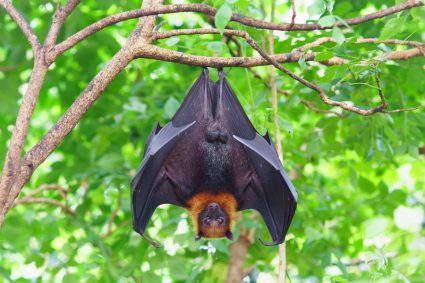
Moles are fascinating creatures with unique adaptations that allow them to thrive in their underground environments. While we might not see them often, their presence is usually marked by the mounds of dirt they leave behind. But where do moles go during the day? Let’s delve into the subterranean world of moles to answer this question.
During the day, moles remain active underground within their burrow systems, where they forage for food and maintain their tunnels. They are active throughout the day and night, with peak activity at dusk and dawn. Moles are fossorial creatures, meaning they spend most of their lives underground, digging tunnels and searching for food.
Moles: An Introduction
Moles are small mammals that are highly adapted to a subterranean lifestyle. They have cylindrical bodies, velvety fur, tiny eyes and ears, and short, powerful forelimbs with large paws that are ideal for digging. Moles are usually 3.5 to 8 inches (9 to 20 cm) long and have a strong odor. They are active day and night, digging surface tunnels in search of earthworms, grubs, and other invertebrates, and excavating deep burrows for occupancy.
Daytime Activities of Moles
During the day, moles remain active underground in their burrow systems, where they forage for food and maintain their tunnels. They are active throughout the day and night, but their activity peaks at dusk and dawn, making them crepuscular animals. Their burrows consist of a network of firm-walled tunnels that can be over 70 meters long and vary in depth from just beneath the surface to about 70 cm.
Moles are generally solitary animals and aggressively defend their burrow systems. They are fossorial creatures, meaning they spend most of their lives underground, digging tunnels and searching for food such as earthworms, grubs, and other invertebrates.
Adapting to Human Presence
Moles do not significantly adapt to human presence or disturbance during their daytime activities. They are primarily subterranean creatures and spend most of their lives underground, digging tunnels to search for food. Moles are active throughout the year and can be active at any time of day or night, with peak periods of activity during early morning and late evening on cloudy days, particularly in the spring and fall.
However, moles can be considered a nuisance by homeowners and gardeners due to the damage they cause to lawns and gardens by creating tunnels and molehills. In response to this, humans may attempt to control mole populations using various methods, such as traps, deterrents, or physical barriers.
Threats and Dangers to Moles During the Day
Moles, like many other animals, face a few threats and dangers during the day. Predators, such as birds of prey, foxes, or domestic cats, pose a significant threat when moles venture above ground. Floods are another danger, particularly during the spring when heavy rains can flood their burrow system.
Coexisting With Moles
Despite their reputation as pests, moles play a crucial role in the ecosystem. They help aerate the soil and control insect populations. Here are some ways humans can coexist with moles without disturbing their daily routine:
- Tolerate their presence: Moles can be beneficial to your garden as they help aerate the soil and consume pests like grubs and insects.
- Plant natural mole repellents: Some plants, such as daffodils, marigolds, alliums, fritillarias, mole plant, and castor beans, can deter moles from your garden.
- Create physical barriers: Installing underground barriers, such as hardware cloth or gopher baskets, can prevent moles from accessing specific areas of your garden.
- Use non-toxic, humane repellents: Some natural repellents, like castor oil, can be used to deter moles without causing them harm.
In conclusion, moles are active throughout the day and night, spending most of their time underground in their burrow systems. Understanding their behavior and lifestyle can help us coexist peacefully with these unique creatures.
Frequently Asked Questions
How long do moles live?
The average lifespan of a mole is about 3 to 6 years.
Do moles have good eyesight?
No, moles have poor eyesight. They primarily rely on their sense of touch and smell to navigate their environment and find food.
What is the breeding season of moles?
Moles typically breed between late winter and early spring. After a gestation period of about 4 to 6 weeks, females give birth to a litter of 3 to 6 young ones.
Are moles harmful to humans?
Moles are not harmful to humans. They do not carry diseases that are transmissible to humans. However, they can cause significant damage to lawns and gardens, which is why they are often considered pests.
What is the difference between moles and voles?
While moles and voles may sound similar, they are different creatures. Moles are larger than voles and have a pointed snout and large, paddle-like forelimbs for digging. Voles, on the other hand, look more like mice with their small rounded ears, short tails, and eyes. Moles primarily eat insects and grubs, while voles are herbivores, eating plants and seeds.











